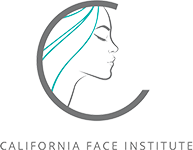Welcome to the new Amar Gupta, M.D. Blog! Thank you so much for your time and interest in learning about topics in Facial Plastic Surgery. For our first post, I would like to focus on the beginnings of the specialty, how it has developed over time, and what it represents today.
Modern Facial Plastic Surgery began over 100 years ago and was created by Otolaryngologists (Ear, Nose, and Throat Surgeons) who wanted to treat physical defects which caused patients some degree of psychological distress, social, or economic disadvantage. Aesthetic surgery was actually outside of mainstream medicine when it initially started. Dr. Jacques Joseph, a German Plastic Surgeon in the early 1900s, first promoted cosmetic surgery as a specialized field and is considered the founding father of modern Facial Plastic Surgery. Sir Harold Gillies (an Otolaryngologist by training), was the first to standardize rhinoplasty, skin grafts, and facial reconstruction in 1920 with his publication, Plastic Surgery of the Face. In fact, he is often considered the founding father of Plastic Surgery as a whole.
The AAFPRS (American Academy of Facial Plastic and Reconstructive Surgery) was officially created in 1964 and marked the beginning of Facial Plastic Surgery as a subspecialty of Otolaryngology. This is the organization which continues to support fellowship training and board certification of Facial Plastic Surgeons such as myself in the United States. Since the founding of the AAFPRS, there has been a global expansion of societies to include the EAFPS (European Academy of Facial Plastic Surgery) and the IFFPSS (International Federation of Facial Plastic Surgery Societies).
Facial Plastic Surgery is a broad clinical specialty that is divided into cosmetic and reconstructive disciplines. Most surgeons today have broad practices that encompass both these areas. In the US, the majority of Facial Plastic Surgeons focus on cosmetic procedures (rhinoplasty, facelift, browlift, blepharoplasty) and reconstruction of facial defects after skin cancer resection or removal. Most surgeons today also use injectable fillers, neuromodulators, lasers, and other devices that aim to rejuvenate the skin. Other disciplines within the auspices of Facial Plastic Surgery include management of skull base and craniomaxillofacial trauma and microvascular reconstruction.
The path to training as a Facial Plastic Surgeon begins with graduation from medical school followed by successful completion of an accredited 5-year residency training program in Otolaryngology – Head and Neck Surgery. This is then supplemented by an additional 1- to 2-year Facial Plastic Surgery fellowship. In contrast to general plastic surgeons, Facial Plastic Surgeons have very specific and specialized training which allows them to focus on procedures and operations involving anatomy from the neck up. The speciality is highly collaborative and has significant overlap with general plastic surgery, oral maxillofacial surgery, ophthalmology, and dermatology.
With this post, my aim is to answer many of your questions regarding Facial Plastic Surgery as a speciality. In the future, I will focus on specific procedures and current developments within our amazing field.
Additional Reading and References
Chuang J, Barnes C, Wong BJF. Overview of Facial Plastic Surgery and Current Developments. Surg J (N Y). 2016;2(1):e17-e28.
Bhattacharya S. Jacques Joseph: Father of modern aesthetic surgery. Indian J Plast Surg. 2008;41(Suppl):S3-8.

Walter Yeo, pictured above, is considered one the first people to benefit from advanced Plastic Surgery. He is shown before (left) and after (right) skin flap surgery performed by Sir Harold Gillies in 1917. Yeo was a sailor, who was tragically injured during the Battle of Jutland, losing both his upper and lower eyelids. Dr. Gillies successfully reconstructed the defect with skin from an unaffected part of the body, using a tubed pedicled flap from the chest wall. With this novel procedure, he paved the way for a rash of improvements in the field of Plastic Surgery .
Behrbohm H, Briedigkeit W, Kaschke O. Jacques Joseph: father of modern facial plastic surgery. Arch Facial Plast Surg. 2008;10(5):300-3.
Triana RJ. Sir Harold Gillies. Arch Facial Plast Surg. 1999;1(2):142-3.

